As the demand for efficient and versatile cooking appliances continues to grow, the contact grill market has emerged as a standout segment. This article delves into the factors shaping consumer preferences, the dynamics of the market, and the strategies that Original Design Manufacturers (ODMs) can employ to thrive in this dynamic sector. We’ll explore the latest innovations, the challenges and opportunities, and the future projections that paint a picture of an evolving contact grill landscape.
The Rising Trend of Contact Grills in Europe and America
The surge in popularity of contact grills in Europe and America has been nothing short of remarkable. These versatile cooking appliances have quickly moved from niche status to becoming a staple in many modern kitchens. Let’s dive into the factors contributing to this upward trend.
Consumer demand for healthier cooking methods has been a significant driver. With the growing awareness of the health risks associated with frying, contact grills offer a low-fat alternative that still delivers that delicious grilled flavor. The ability to cook food with minimal oil has made them an attractive option for health-conscious consumers.
Ease of use is another key factor. Contact grills are designed for quick and convenient cooking, often with a simple flip of a switch. Their compact size and straightforward operation make them perfect for busy lifestyles, where time is a luxury that few can afford to waste.
The aesthetic appeal of contact grills has also played a role in their rise. Modern designs, often featuring sleek stainless steel surfaces and intuitive interfaces, have helped these appliances blend seamlessly into kitchen decor. They’re not just a cooking tool but also a stylish addition to the kitchen environment.
The convenience of contact grills is further enhanced by their versatility. They can be used to cook a wide range of foods, from meats to vegetables, and even sandwiches. This flexibility has made them a favorite among those who enjoy experimenting with different recipes.
In Europe, the trend has been further fueled by the popularity of outdoor dining. With the warmer months, people are more likely to host barbecues and outdoor gatherings. Contact grills offer a convenient alternative to traditional charcoal or gas grills, allowing for quick and easy cooking without the need for cleanup.
Similarly, in America, the contact grill market has seen significant growth, particularly in urban areas. The fast-paced lifestyle of city dwellers has led to a demand for appliances that can help them prepare meals efficiently, and contact grills fit this bill perfectly.
The rise of contact grills has also been bolstered by the influence of celebrity chefs and cooking shows. As these platforms promote the use of healthier cooking methods and innovative kitchen gadgets, the appeal of contact grills has expanded to a broader audience.
Another important factor is the environmental consciousness of today’s consumers. Contact grills are often more energy-efficient than traditional cooking methods, which is a significant consideration for those looking to reduce their carbon footprint.
In terms of technology, contact grills have evolved to offer more advanced features. Some models now come with adjustable temperature controls, non-stick surfaces, and even digital displays that provide precise cooking times and temperatures. These innovations have helped to elevate the contact grill from a simple kitchen gadget to a sophisticated cooking tool.
The market for contact grills has also been positively impacted by the rise of online shopping. With more consumers turning to the internet for their shopping needs, the availability of contact grills through online retailers has made them more accessible to a wider demographic.
In conclusion, the rising trend of contact grills in Europe and America is a testament to the changing landscape of consumer preferences and kitchen technology. As the demand for healthier, efficient, and stylish cooking solutions continues to grow, it’s clear that contact grills are here to stay.
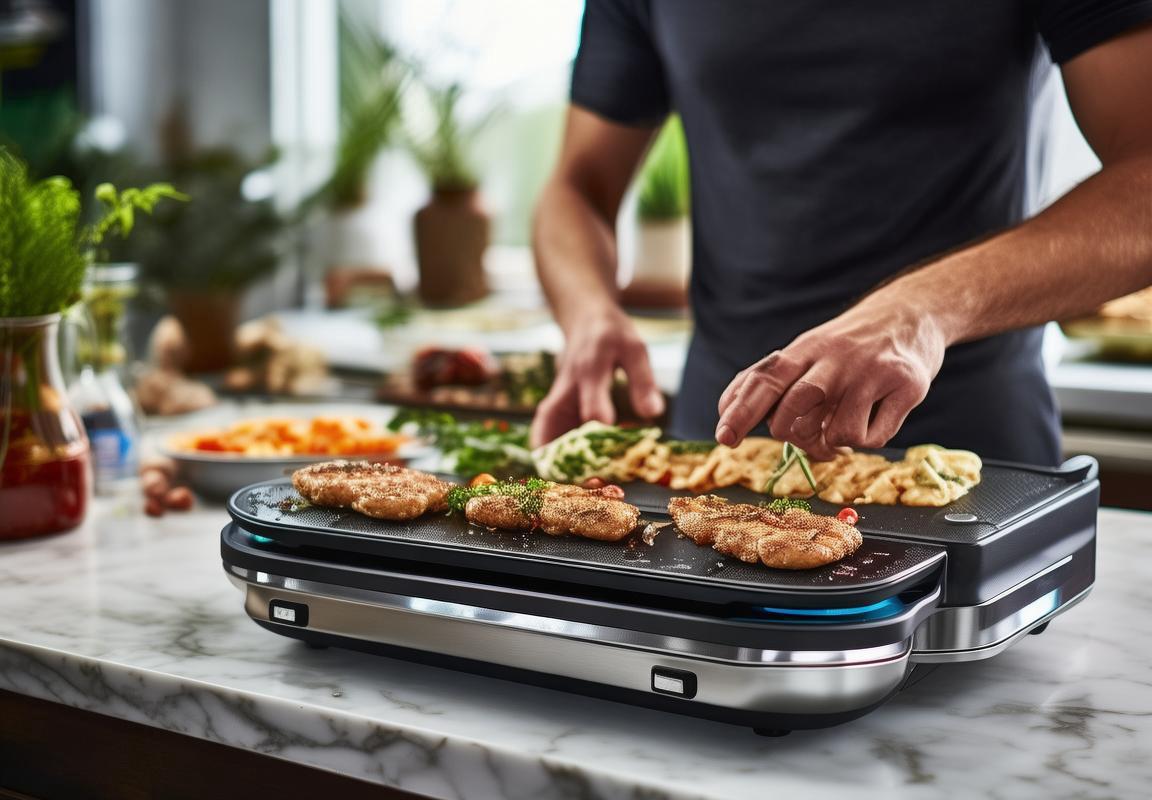
Understanding ODM in the Contact Grill Industry
In the competitive landscape of the contact grill industry, Original Design Manufacturer (ODM) partnerships have become a cornerstone for many companies seeking to innovate and differentiate their products. ODMs play a pivotal role by providing a bridge between the vision of a brand and the final product that reaches the consumer.
ODMs are essentially the silent architects of the contact grill market. They take the initial concept or design provided by a client and transform it into a tangible product. This process involves a deep understanding of the market, consumer needs, and the latest technological advancements. By specializing in specific product categories, ODMs have honed their skills to deliver high-quality, customized solutions.
The ODM model is particularly favored in the contact grill industry due to its flexibility and efficiency. Brands often lack the in-house capabilities or the resources to develop new products from scratch. ODMs, on the other hand, have the expertise, infrastructure, and supply chain to bring these ideas to life. This collaboration allows brands to focus on their core competencies, such as marketing and sales, while leaving the manufacturing to the experts.
One of the key benefits of working with an ODM is the speed of product development. ODMs are equipped with rapid prototyping capabilities, which means they can quickly iterate and refine designs based on feedback. This agility is crucial in a market where trends can shift rapidly, and being first to market can be a significant competitive advantage.
When it comes to contact grills, ODMs are responsible for a wide range of tasks, from the initial design phase to final assembly. They source the necessary materials, manage the production process, and ensure that the product meets the required quality standards. This includes everything from the heating elements and cooking plates to the user interface and safety features.
Customization is another area where ODMs excel. They understand that no two brands are the same, and they tailor their services to meet the unique needs of each client. This might involve modifying existing designs, integrating new features, or even creating entirely new product lines. The ability to customize at scale is a testament to the ODM’s expertise and the efficiency of their operations.
In terms of innovation, ODMs are often at the forefront. They invest in research and development to stay ahead of market trends and technological advancements. This means that brands using ODM services can benefit from cutting-edge solutions that might not be feasible to develop in-house. For example, an ODM might introduce a new type of non-stick coating or a more efficient heating element, enhancing the overall performance and consumer appeal of the contact grill.
Quality control is also a critical aspect of the ODM’s role. They are responsible for ensuring that each contact grill meets the highest standards of quality and safety. This involves rigorous testing at various stages of the production process, from material inspection to final product testing. The ODM’s commitment to quality is essential for building trust with consumers and for the long-term success of the brand.
Moreover, ODMs often handle the logistics and distribution of the products. They have established relationships with shipping companies and distributors, which can streamline the process and reduce costs for the brand. This end-to-end service means that the client can focus on other aspects of their business, knowing that the manufacturing and supply chain are in capable hands.
In the realm of sustainability, ODMs are also playing a significant role. They are increasingly being asked to produce products that are environmentally friendly, using recycled materials and energy-efficient processes. This not only aligns with consumer values but also helps brands to appeal to a broader market segment.
In conclusion, the ODM model in the contact grill industry is a symbiotic relationship that leverages the strengths of both parties. Brands gain access to a wealth of expertise, rapid prototyping capabilities, and a commitment to quality and innovation. For ODMs, it’s an opportunity to expand their portfolio and demonstrate their value in a highly competitive market. As the demand for contact grills continues to grow, the role of ODMs in shaping the industry’s future is undeniable.

Market Dynamics: What’s Driving the Contact Grill Demand?
The demand for contact grills in the European and American markets is experiencing a surge, fueled by a combination of lifestyle shifts, technological advancements, and changing consumer preferences. Let’s delve into the key factors that are driving this demand.
Health and Wellness AwarenessOne of the primary drivers behind the increasing demand for contact grills is the growing health and wellness trend. Consumers are becoming more conscious of the nutritional content of their food, and contact grills offer a healthier alternative to traditional grilling methods. These appliances allow for direct contact cooking, which can reduce the need for added fats and oils, thus making the cooking process more health-conscious.
Convenience and SpeedIn today’s fast-paced world, convenience and speed are paramount. Contact grills are designed to cook food quickly, often in a fraction of the time it takes for traditional grilling methods. This aspect appeals to busy individuals and families who seek quick and easy meal preparation without compromising on taste or quality.
Technological InnovationsThe integration of advanced technology into contact grills has also played a significant role in driving demand. Features such as adjustable heat settings, non-stick surfaces, and programmable cooking times have made these appliances more user-friendly and adaptable to various types of food and cooking styles. These innovations have expanded the appeal of contact grills beyond the traditional barbecue enthusiast.
Cooking VersatilityContact grills offer a high degree of cooking versatility, which is another factor contributing to their rising demand. These appliances can sear, grill, and even toast, making them a versatile tool for a wide range of recipes. From sandwiches to steaks, the ability to achieve different cooking outcomes on the same appliance is highly attractive to consumers looking to diversify their cooking options.
Sustainability and Energy EfficiencyAs environmental concerns grow, so does the demand for energy-efficient appliances. Contact grills are generally more energy-efficient than traditional grills, as they require less heat to cook food. This not only saves energy but also reduces the carbon footprint, making them an environmentally friendly choice for consumers who are conscious of their ecological impact.
Cultural Shifts and GlobalizationThe globalization of food cultures has also influenced the demand for contact grills. As people become more exposed to international cuisines, they seek to recreate these flavors at home. Contact grills provide a way to achieve authentic grill marks and textures that are often associated with exotic dishes, thereby appealing to a more adventurous palate.
Economic FactorsEconomic stability and disposable income levels have a direct impact on consumer spending habits. As the economies of Europe and America have stabilized, consumers have more disposable income to allocate towards kitchen appliances. The rising demand for contact grills can be partially attributed to this increased purchasing power.
Marketing and BrandingEffective marketing and branding strategies have also played a crucial role in driving demand for contact grills. Companies have been successful in highlighting the benefits of these appliances through targeted advertising campaigns, social media influencers, and product demonstrations. The positive perception of contact grills has been bolstered by these efforts, leading to increased sales.
Safety and CleanlinessSafety and cleanliness are paramount in modern kitchens, and contact grills address these concerns. The compact design and ease of cleaning of these appliances make them a favorite among busy homeowners who value a hygienic cooking environment. The fear of flare-ups and the clean-up associated with traditional grilling methods has been mitigated by the introduction of contact grills.
In conclusion, the demand for contact grills in Europe and America is being propelled by a myriad of factors, including health and wellness trends, convenience, technological advancements, versatility, sustainability, economic factors, and effective marketing. As these trends continue to evolve, it’s likely that the demand for contact grills will only grow stronger.
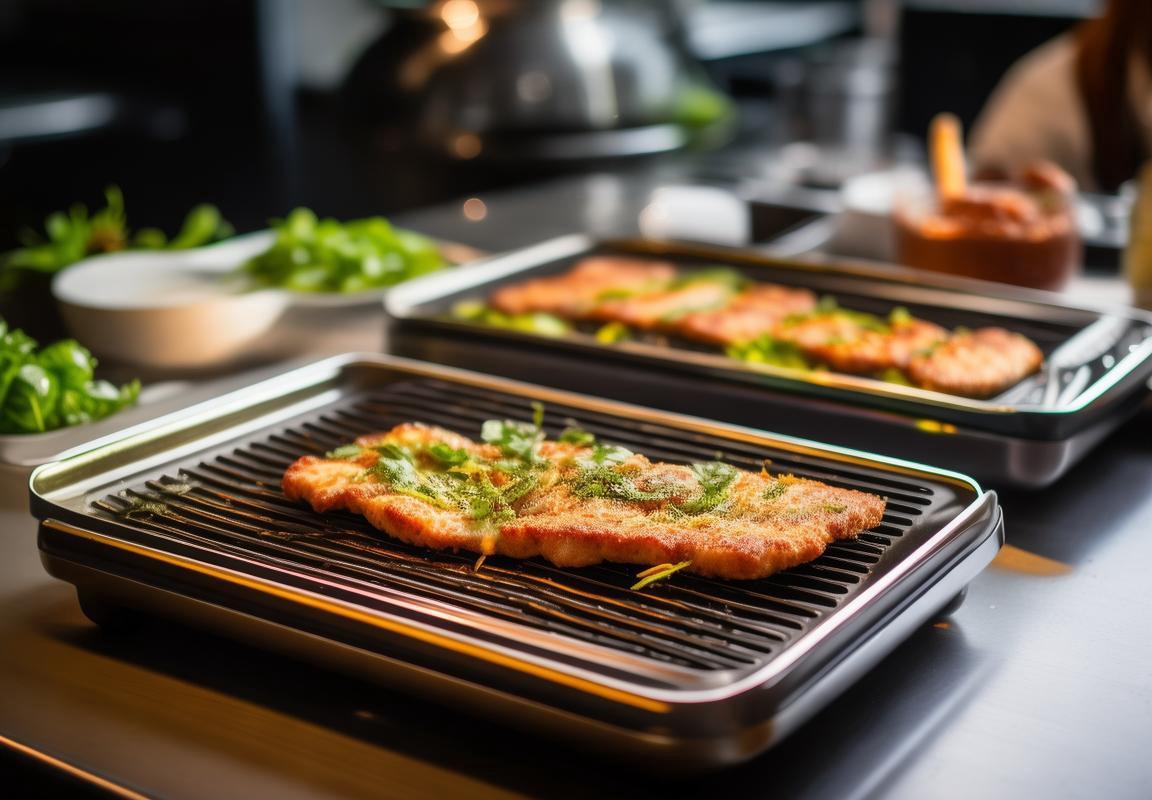
Key Players and Market Share Analysis
In the bustling contact grill industry, several key players have emerged as leaders, each carving out a niche for themselves through innovation, quality, and market strategy. Understanding their market share and the dynamics of their presence is crucial for anyone looking to navigate this competitive landscape.
4.1 Industry Giants with Strong Market Presence
One cannot discuss the contact grill market without mentioning brands like George Foreman, Char-Broil, and Cuisinart. These companies have been at the forefront, offering a range of contact grills that cater to various consumer needs. With a significant market share, they have managed to establish a loyal customer base through consistent product quality and brand recognition.
4.2 Niche Brands Making Waves
While the big names hold a substantial share, niche brands have also found their place in the market. Companies like Breville and Hamilton Beach have gained popularity for their unique features and design aesthetics. These brands often target health-conscious consumers with their sleek, easy-to-clean models, carving out a niche market share with their specialized offerings.
4.3 The Influence of Online Retailers
The rise of online marketplaces has reshaped the contact grill industry, allowing new players to enter the market and capture a piece of the pie. Amazon, Walmart, and other e-commerce giants have provided a platform for both established and emerging brands to reach a wider audience. This shift has led to increased competition and has forced traditional retailers to adapt to the new retail landscape.
4.4 Collaborations and Partnerships
Several key players have recognized the value of collaboration and partnerships in expanding their market share. For instance, appliance manufacturers have joined forces with outdoor equipment brands to create hybrid contact grills that cater to both indoor and outdoor cooking enthusiasts. These strategic alliances not only help in diversifying product lines but also in tapping into new customer segments.
4.5 The Role of Innovation
Innovation is a driving force behind the success of many contact grill brands. Continuous improvements in technology, such as adjustable heat settings, non-stick surfaces, and advanced cooking surfaces, have made these appliances more appealing to consumers. Brands that invest in research and development often see a direct correlation between innovation and market share growth.
4.6 Global Expansion and Localization
As the contact grill market continues to grow, key players are looking beyond domestic markets to expand globally. This expansion often involves localizing products to cater to specific cultural preferences and regulatory requirements. Companies that successfully navigate these challenges can significantly increase their market share in new regions.
4.7 Brand Loyalty and Customer Experience
The importance of brand loyalty and customer experience cannot be overstated. Key players in the contact grill industry invest heavily in customer service and loyalty programs to retain their customer base. By offering exceptional after-sales support and engaging with customers through social media and other channels, these brands have managed to build a strong reputation and maintain a healthy market share.
4.8 The Impact of Health and Wellness Trends
The increasing awareness of health and wellness has had a profound impact on the contact grill market. Consumers are seeking cooking methods that offer healthier alternatives to traditional grilling, such as contact grilling, which can reduce the amount of oil used. Brands that align with these trends and offer products that promote healthy cooking are likely to see a boost in their market share.
4.9 The Challenge of Counterfeiting
The issue of counterfeiting poses a significant challenge to key players in the contact grill industry. The unauthorized production and sale of counterfeit products can dilute the market share of legitimate brands and damage their reputations. To combat this, companies are investing in anti-counterfeiting technologies and working closely with law enforcement agencies.
4.10 The Future of Market Share Dynamics
As the contact grill market evolves, the dynamics of market share will continue to shift. The rise of smart kitchen appliances, the integration of IoT technology, and the potential for new materials and designs could all influence the market share of key players. Those who adapt to these changes and continue to innovate will likely maintain or even increase their market share in the coming years.

The Importance of Quality and Customization
In the realm of contact grill manufacturing, the significance of quality and customization cannot be overstated. These two aspects are not just elements that enhance the appeal of a product; they are the pillars upon which a brand’s reputation and market standing are built. Let’s delve into why these factors are so crucial.
The Craftsmanship Behind QualityQuality in contact grills is paramount due to the delicate balance of heat distribution and cooking efficiency they require. High-quality components, such as robust stainless steel bodies and precise thermostats, ensure that each grill performs reliably, year after year. The craftsmanship involved in manufacturing these components, from the forging of metal parts to the intricate wiring of electrical systems, reflects the dedication to excellence that consumers have come to expect from premium kitchen appliances.
Consumer Expectations and ReliabilityToday’s consumers are more informed and discerning than ever before. They expect their appliances to be not just functional but also durable and user-friendly. A high-quality contact grill with customizable features not only meets these expectations but often exceeds them. Customers are willing to invest in a product that promises reliability, knowing that it will be a long-term companion in their kitchen.
Customization as a DifferentiatorCustomization has emerged as a key differentiator in the contact grill market. Brands that offer the ability to tailor their grills to specific needs or preferences stand out in a crowded marketplace. Whether it’s adjusting the cooking temperature, selecting different cooking plates, or even opting for smart features that integrate with home automation systems, customization empowers consumers to own a grill that’s uniquely theirs.
The Role of Innovation in QualityAs technology advances, the expectation for innovation in contact grill design and functionality grows. High-quality grills often incorporate cutting-edge technologies that not only enhance cooking performance but also safety and ease of use. Features like adjustable heat settings, non-stick coatings, and even self-cleaning capabilities are not just nice-to-have; they are the hallmarks of a product that prioritizes quality above all else.
Economic Impact on ManufacturersFor manufacturers, the focus on quality and customization has a direct economic impact. Investing in top-notch materials and rigorous quality control processes can lead to higher production costs, but these costs are often justified by the premium pricing that consumers are willing to pay for a high-quality product. Moreover, the longevity of these products often translates into lower maintenance and replacement costs for consumers, which can positively influence brand loyalty and repeat purchases.
Sustainability and Eco-Friendly PracticesThe importance of quality and customization extends to the consideration of sustainability and eco-friendly practices. High-quality contact grills are often designed with sustainability in mind, using materials that are recyclable or sourced from renewable resources. Customization also allows for the reduction of waste, as customers can choose only the features they need, reducing the environmental footprint of the product.
Customer Satisfaction and Word-of-MouthUltimately, the combination of quality and customization leads to higher customer satisfaction. Satisfied customers are more likely to recommend the brand to friends and family, creating a powerful word-of-mouth marketing network. This organic growth is invaluable for a manufacturer looking to build a strong brand and increase market share.
Training and Support ServicesTo maintain quality, manufacturers must invest in training their staff and providing comprehensive support services. This includes ongoing technical support for both consumers and distributors, as well as rigorous quality assurance checks at every stage of production. By ensuring that every aspect of the product is up to par, manufacturers can confidently stand behind their products and provide a seamless customer experience.
In conclusion, the importance of quality and customization in the contact grill industry is multifaceted. It encompasses everything from the satisfaction of the end-user to the economic health of the manufacturer. As the market continues to evolve, those who prioritize these aspects will likely find themselves leading the pack in this highly competitive sector.
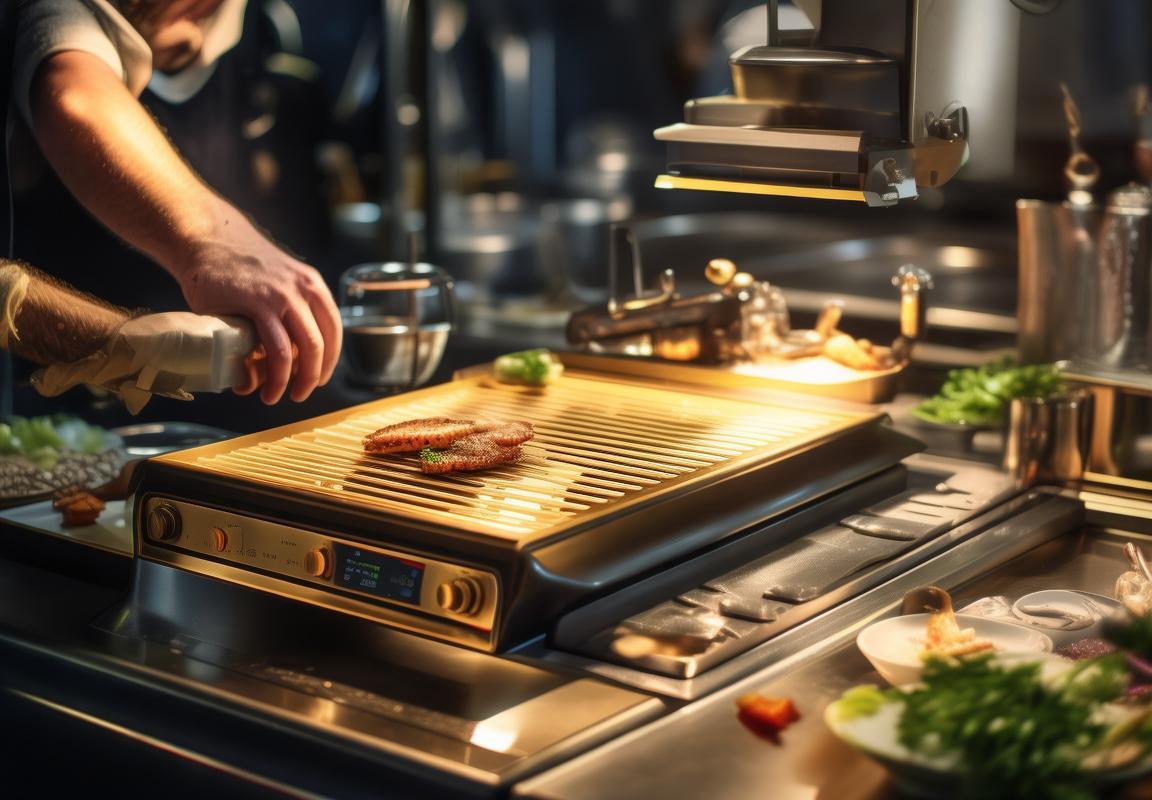
Innovations in Contact Grill Design and Technology
In recent years, the contact grill industry has seen a surge in innovation, driven by consumer demand for healthier cooking options and convenience. These advancements not only enhance the functionality of contact grills but also cater to a broader range of culinary preferences. Let’s delve into some of the notable innovations in contact grill design and technology.
Grill Plates and Cooking SurfacesOne of the most significant innovations in contact grills is the evolution of grill plates. Traditional flat surfaces have given way to more sophisticated designs, such as grooved or ridged plates, which improve the sear and texture of food. High-quality materials like stainless steel and ceramic coatings are now standard, ensuring durability and non-stick properties. Some models even feature adjustable temperature control, allowing users to tailor the cooking experience to their preferences.
Smart Technology IntegrationThe integration of smart technology has revolutionized the contact grill market. Modern grills often come with digital temperature controls, LED displays, and Wi-Fi connectivity. Users can now monitor and adjust the grill’s temperature remotely through their smartphones, making it easier to achieve perfect cooking results. Some units also offer built-in timers, auto-shutoff features, and pre-programmed cooking modes for specific types of food, simplifying the grilling process.
Design and AestheticsDesign trends in contact grills have shifted towards sleeker, more compact appliances that fit seamlessly into modern kitchens. Manufacturers have focused on reducing the footprint of contact grills without compromising on cooking surface size. The new designs often feature integrated drip trays and adjustable legs for stability. Additionally, the use of non-slip materials and easy-to-clean surfaces has made these grills more user-friendly.
Health and Wellness FocusAs consumers become more health-conscious, contact grills have adapted to meet these demands. The ability to cook food with less oil or fat has become a key selling point. Innovative contact grill models now come with features like adjustable pressure control, which can help achieve a crispy outer layer with a tender interior without the need for excessive oil. This focus on health has also led to the development of eco-friendly materials and energy-efficient designs.
Customization OptionsCustomization has become a significant aspect of contact grill technology. Users now have the option to choose between different types of cooking surfaces, such as cast iron, stainless steel, or ceramic. Some models even offer reversible plates, allowing for versatile cooking experiences. Additionally, some manufacturers are offering modular designs, where users can swap out components to upgrade or replace parts as needed.
Safety FeaturesSafety has always been a priority in the appliance industry, and contact grills are no exception. Modern innovations include safety interlocks that prevent the grill from operating unless it’s properly closed and secure. Some models also feature anti-slip bases and cool-touch handles to prevent accidental burns. These features, combined with user-friendly interfaces, make contact grills safer and more accessible to a wider audience.
Sustainability and Environmental ConsiderationsThe contact grill industry is also responding to global concerns about sustainability. New models are designed with environmentally friendly materials and manufacturing processes. Some grills are even Energy Star certified, meaning they use less energy than traditional appliances while still providing the same level of performance.
Interactive Cooking and EducationFinally, contact grills are becoming more interactive. Many manufacturers are incorporating digital cookbooks and recipe guides directly into their grills. Users can access a wealth of recipes and cooking tips, making it easier to experiment with new flavors and techniques. This educational aspect is particularly appealing to home chefs looking to enhance their culinary skills.
In conclusion, the contact grill industry is witnessing a wave of innovation that not only improves the cooking experience but also aligns with the values and needs of modern consumers. From enhanced cooking surfaces and smart technology to a focus on health, safety, and sustainability, the future of contact grills looks to be as diverse and dynamic as the culinary landscape itself.
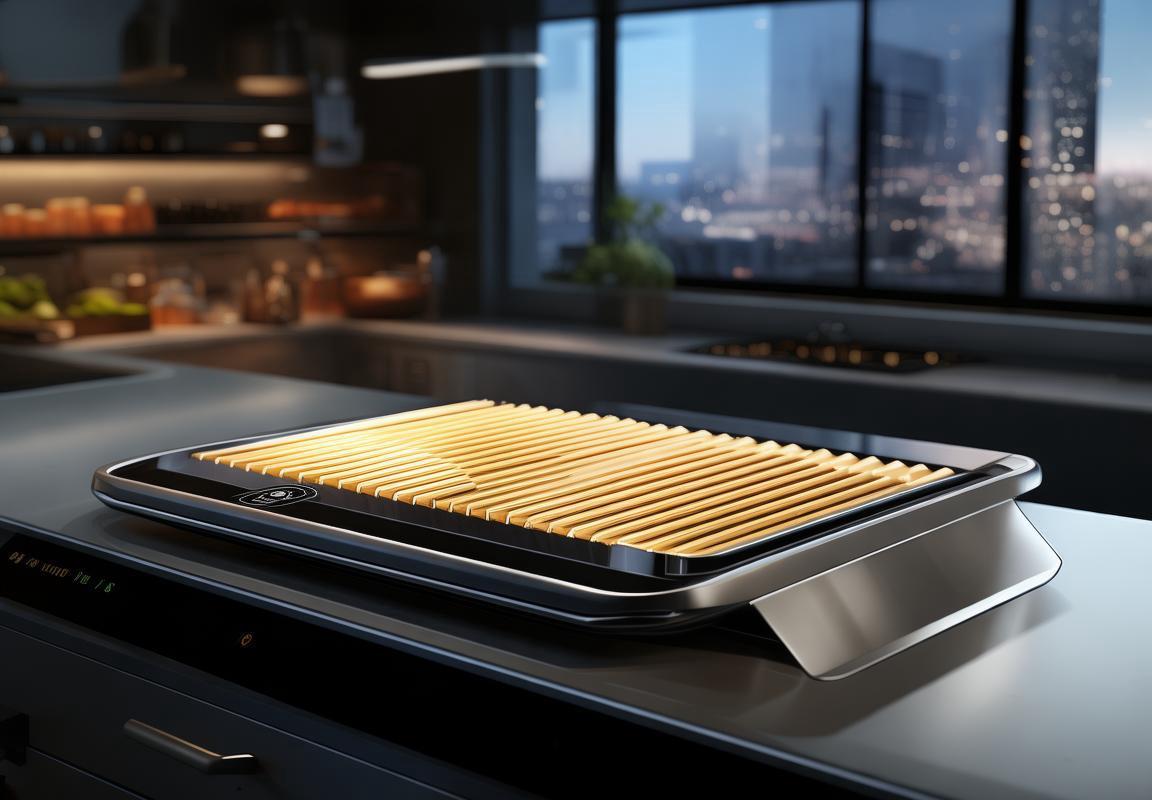
Challenges and Opportunities for Contact Grill ODMs
Navigating the competitive landscape of the contact grill market, Original Design Manufacturers (ODMs) face a unique set of challenges and opportunities. Balancing innovation with market demands, these companies must adapt to a rapidly evolving industry.
Innovation is a cornerstone of success for contact grill ODMs. The industry is witnessing a surge in technological advancements that enhance user experience and safety. Smart features like temperature control, wireless connectivity, and app integration are becoming increasingly popular, offering consumers a more interactive and precise cooking experience.
Moreover, the demand for eco-friendly and energy-efficient products is on the rise. ODMs are responding by integrating sustainable materials and energy-saving technologies into their designs. These changes not only cater to the environmental concerns of consumers but also open up new markets, particularly in regions with strong environmental policies.
Challenges, however, are not far behind. One of the biggest hurdles for contact grill ODMs is the rapid pace of technological change. Keeping up with innovations can be costly, requiring significant investments in research and development. Additionally, the cost of materials, especially for high-quality, durable components, continues to rise, putting pressure on profit margins.
Market competition is fierce, with a myriad of players vying for a share of the market. Brand differentiation becomes crucial for ODMs, as they often produce products for well-known brands. This means not only manufacturing to exact specifications but also adding value through design, functionality, and after-sales service.
The rise of e-commerce has both broadened the market and added complexities. ODMs must now consider how to cater to the direct-to-consumer model, which often requires additional services such as packaging, branding, and digital marketing. This shift has also necessitated a more agile production process, capable of handling smaller batch orders and rapid changes in demand.
Opportunities, however, abound for those ODMs that can navigate these challenges effectively. The global market for contact grills is expanding, with emerging markets showing particular growth potential. ODMs that can offer competitive pricing and efficient supply chain management are well-positioned to capture this growth.
Collaboration with local manufacturers and suppliers in these emerging markets can provide cost advantages and facilitate the development of custom solutions that cater to specific regional tastes and preferences. This localization can also help ODMs comply with various regulatory requirements, which can vary significantly from one country to another.
Furthermore, the health and wellness trend is driving demand for contact grills. Consumers are increasingly looking for healthier cooking methods that minimize oil usage and preserve food nutrients. ODMs that can emphasize the health benefits of their products in marketing materials and packaging will likely see a boost in sales.
In terms of design, the market is moving towards more user-friendly interfaces and intuitive controls. Contact grill ODMs that can incorporate these features will appeal to a broader audience, including those who may not be as technologically inclined. The integration of smart features is also a gateway to new opportunities, such as data analytics, which can provide valuable insights into consumer behavior and preferences.
Sustainability remains a key opportunity for ODMs. As the world becomes more environmentally conscious, the demand for sustainable products is growing. ODMs that can incorporate recycled materials, sustainable manufacturing processes, and eco-friendly packaging will not only meet consumer expectations but also stand out in a crowded market.
In conclusion, the contact grill industry presents a complex web of challenges and opportunities for ODMs. By focusing on innovation, differentiation, and sustainability, while also adapting to the evolving market dynamics, these companies can carve out a niche and thrive in a competitive landscape. The key lies in staying agile, informed, and responsive to both consumer trends and technological advancements.

Consumer Preferences and Market Trends
In the ever-evolving landscape of the contact grill market, consumer preferences and market trends play a pivotal role in shaping the industry. Understanding these dynamics is crucial for both manufacturers and retailers to stay ahead of the curve. Here’s a closer look at the latest consumer preferences and market trends that are shaping the contact grill industry.
The Shift Towards Healthier Cooking MethodsConsumers are increasingly conscious of the health impacts of their diets. This has led to a significant rise in demand for cooking methods that minimize oil usage and preserve the natural flavors of food. Contact grills, with their ability to cook with minimal oil, are perfectly positioned to cater to this growing preference for healthier cooking options.
The Rise of Smart and Eco-Friendly GrillsWith the advent of technology, contact grills are no longer just cooking appliances; they are becoming smart devices. The integration of digital controls, temperature sensors, and even Wi-Fi connectivity allows users to monitor and adjust their grilling experience remotely. Additionally, the market is seeing a surge in eco-friendly models that use less energy and are made from sustainable materials, appealing to environmentally conscious consumers.
The Importance of VersatilityToday’s consumers are looking for multifunctional appliances that can handle various cooking tasks. Contact grills that offer additional features such as a reversible grill plate, a built-in thermometer, or even a searing function are gaining popularity. The ability to cook a wide range of foods, from vegetables to meats, on a single appliance is a major draw for busy households and food enthusiasts alike.
The Influence of Social Media and InfluencersSocial media has become a powerful tool for shaping consumer preferences. Influencers and food bloggers often showcase their grilling skills and the latest contact grill models, which can significantly impact consumer buying decisions. The visual appeal of perfectly grilled dishes shared online can inspire consumers to invest in high-quality contact grills for their own kitchens.
The Role of Price and AccessibilityWhile health and technology are important factors, price remains a significant consideration for many consumers. There is a broad spectrum of contact grill prices, from budget-friendly models to premium, high-tech options. The middle ground, offering a balance between quality, features, and affordability, tends to attract the largest market share. Additionally, the accessibility of these grills through various retail channels, including online marketplaces, brick-and-mortar stores, and specialty kitchenware shops, plays a crucial role in their market penetration.
The Demand for Diverse Cooking StylesDifferent regions and cultures have unique preferences when it comes to cooking. Contact grill manufacturers are responding to this diversity by offering models that can replicate a variety of cooking styles, from the smoky flavors of a barbecue to the precision of a steakhouse grill. This focus on cultural nuances allows for a broader appeal and market expansion.
The Trend of Customization and PersonalizationPersonalization is becoming a key trend in the contact grill market. Consumers are looking for grills that can be customized to their specific needs, whether it’s through adjustable heat settings, removable grill plates for different types of food, or even color and design choices. The ability to tailor the appliance to individual preferences is a strong selling point for many consumers.
The Impact of Sustainability and Ethical SourcingAs environmental concerns grow, consumers are more likely to support brands that prioritize sustainability and ethical sourcing. Contact grill manufacturers that use recycled materials, have a commitment to reducing carbon footprints, or source components from sustainable suppliers are gaining a competitive edge in the market.
The Emergence of Health and Wellness FeaturesThe health and wellness trend is not just about cooking methods; it extends to the features of the appliances themselves. Contact grills with features like non-stick coatings that reduce the need for cleaning agents, or those that can be easily disassembled for thorough cleaning, are becoming more popular. These health-conscious features are resonating with consumers who are looking to minimize their exposure to harmful chemicals.
The Influence of Demographic ChangesDemographic shifts, such as an aging population with a preference for outdoor cooking and a younger demographic that values convenience and technology, are also influencing market trends. Contact grill manufacturers that can cater to these diverse needs with tailored product offerings are likely to see increased demand.
The Importance of After-Sales Service and WarrantiesFinally, the level of after-sales service and warranty offered by contact grill brands can significantly impact consumer satisfaction and loyalty. With the high cost of some models, consumers are looking for reassurance that they will be supported should any issues arise. Brands that offer comprehensive support and long-term warranties are likely to build a strong customer base.
These consumer preferences and market trends highlight the dynamic nature of the contact grill industry and the need for manufacturers to stay adaptable and innovative to meet the evolving demands of their customers.

Future Projections: What the Contact Grill Market Will Look Like
In the evolving landscape of the contact grill market, several factors are shaping the future trajectory. As consumers become more health-conscious and the convenience of kitchen appliances grows, the contact grill industry is poised for significant changes. Here are some key projections that could define the future of this market:
The integration of smart technology is expected to become a staple in contact grill design. With the rise of the Internet of Things (IoT), appliances that can connect to smartphones and provide real-time cooking data, temperature control, and even meal suggestions are likely to gain popularity. This level of connectivity could transform the way users interact with their grills.
Sustainability will play a pivotal role in the contact grill market. As environmental concerns grow, manufacturers may focus on creating more energy-efficient models and using sustainable materials. This shift could lead to a market that is not only healthier for consumers but also better for the planet.
The trend towards healthier eating is likely to continue driving demand for contact grills. With the popularity of grilling as a cooking method, which can be a healthier alternative to frying, consumers are seeking appliances that allow them to enjoy this method at home. This demand could lead to the development of grills that offer more health benefits, such as non-stick surfaces or temperature-controlled cooking to prevent charring.
Customization is another area that is poised to grow. As consumers become more discerning about their appliances, they’re looking for products that can be tailored to their specific needs and preferences. This could mean adjustable heat settings, various cooking surfaces, or even modular designs that allow for the addition of accessories.
The rise of online shopping and e-commerce has already had a significant impact on the contact grill market. As more consumers turn to the internet to purchase their appliances, there’s an opportunity for manufacturers to reach a broader audience. This digital transformation could lead to a more diverse range of products being available globally.
Regulatory changes could also influence the contact grill market. New safety standards, for instance, may necessitate the inclusion of certain features in new models, while environmental regulations could push manufacturers to use more sustainable materials or improve energy efficiency.
The global distribution of the contact grill market is likely to change as well. Emerging markets, particularly in Asia and South America, are showing strong growth potential. This expansion could lead to a more diverse set of competitors and innovative products tailored to local tastes and preferences.
Innovation in cooking technology, such as the development of induction grills that provide more precise temperature control, could revolutionize the market. These advancements could attract consumers who are looking for the latest in cooking technology and are willing to invest in high-end appliances.
As the contact grill market continues to evolve, so too will the competition. Established brands will need to innovate to maintain their market share, while new entrants will bring fresh ideas and designs to the table. This competition could lead to a market that is more dynamic and responsive to consumer needs.
Finally, the rise of health-focused cooking trends, such as the use of herbs and spices instead of salt and oil, may influence the design and functionality of contact grills. Manufacturers may need to incorporate features that make it easier for users to control the seasoning and cooking time to achieve the desired flavor profiles.
These projections are based on current market trends and consumer behavior. However, the contact grill market is subject to change, and what the future holds remains to be seen. What is clear, though, is that innovation, customization, and a focus on health and sustainability will be key drivers in shaping the next chapter of this dynamic industry.
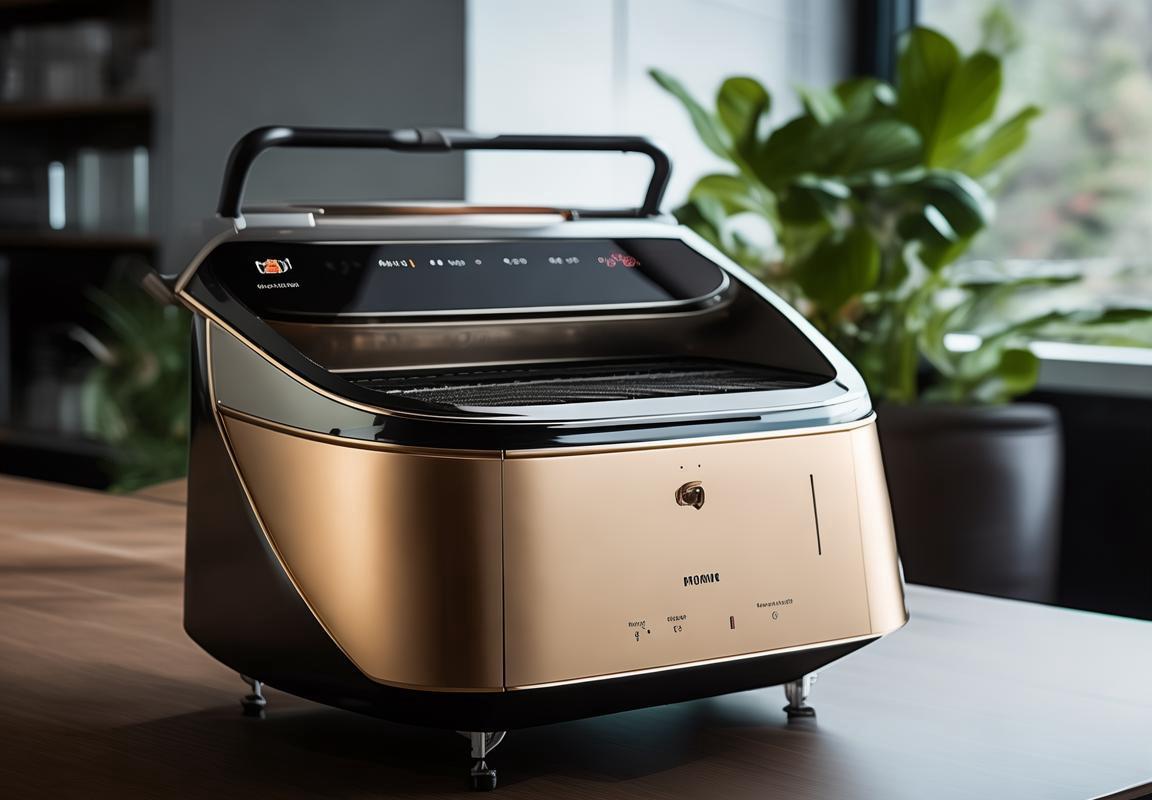
How ODMs Can Thrive in the Contact Grill Sector
The contact grill market, a niche but growing segment within the broader kitchen appliance industry, presents a unique set of opportunities for Original Design Manufacturers (ODMs). To thrive in this sector, ODMs must navigate a landscape marked by evolving consumer preferences, technological advancements, and competitive pressures. Here’s how they can do just that:
In the realm of contact grills, ODMs face the challenge of balancing innovation with market demand. They must understand that customers are not just looking for a way to cook their food; they are seeking a cooking experience that enhances their daily routine. This means that the design, functionality, and aesthetics of contact grills play a crucial role in their appeal.
One way ODMs can thrive is by focusing on sustainable and eco-friendly materials. As consumers become more environmentally conscious, offering grills made from recycled or biodegradable materials can be a significant differentiator. This approach not only aligns with global sustainability trends but also resonates with a demographic that values ethical manufacturing practices.
The integration of smart technology into contact grills is another area where ODMs can stand out. By incorporating features like Bluetooth connectivity, digital temperature control, and recipe customization, ODMs can create a product that caters to the tech-savvy consumer. This not only adds value to the product but also opens up new revenue streams through digital content and software updates.
Understanding the importance of brand and marketing is essential for ODMs looking to succeed. Establishing a strong brand identity can be challenging, especially when dealing with private label products. However, ODMs can leverage social media and influencer partnerships to create buzz and establish credibility. By showcasing the unique selling points of their grills, they can build a loyal customer base that values the quality and innovation they offer.
Customization is key in the contact grill sector. ODMs that offer personalized design options or modular components can cater to a wider range of customer needs. This could include different sizes, colors, or even specialized cooking surfaces. By allowing customers to tailor their contact grills to their specific preferences, ODMs can create a more engaging and personalized product experience.
Supply chain management is also a critical aspect for ODMs. Ensuring that components are sourced from reliable suppliers, maintaining inventory levels, and managing production timelines are all vital for meeting customer demands. ODMs must be agile and adaptable, capable of responding to market changes quickly and efficiently.
Moreover, ODMs need to stay abreast of regulatory changes and safety standards. Contact grills, like any kitchen appliance, must meet strict safety regulations. By maintaining compliance with these standards, ODMs can avoid costly recalls and maintain a good reputation in the industry.
Another opportunity for ODMs lies in the growing health and wellness trend. As consumers become more health-conscious, there is an increased interest in cooking methods that retain more nutrients. ODMs can capitalize on this by promoting the health benefits of contact grilling, such as its ability to cook food with less oil and at lower temperatures.
Collaborating with research and development teams to push the boundaries of contact grill technology is another strategic move. This could involve exploring new materials, heating elements, and cooking surfaces. By investing in R&D, ODMs can stay ahead of the curve and offer cutting-edge products that attract early adopters and tech enthusiasts.
Lastly, ODMs should not underestimate the power of partnerships. By forming alliances with established brands or retailers, they can gain access to new markets and customer segments. These partnerships can also provide valuable feedback that can be used to improve product offerings.
In conclusion, for ODMs to thrive in the contact grill sector, they must focus on innovation, customization, and market trends. By understanding and adapting to consumer preferences, leveraging technology, and building strong partnerships, ODMs can navigate the challenges and seize the opportunities that this dynamic market presents.